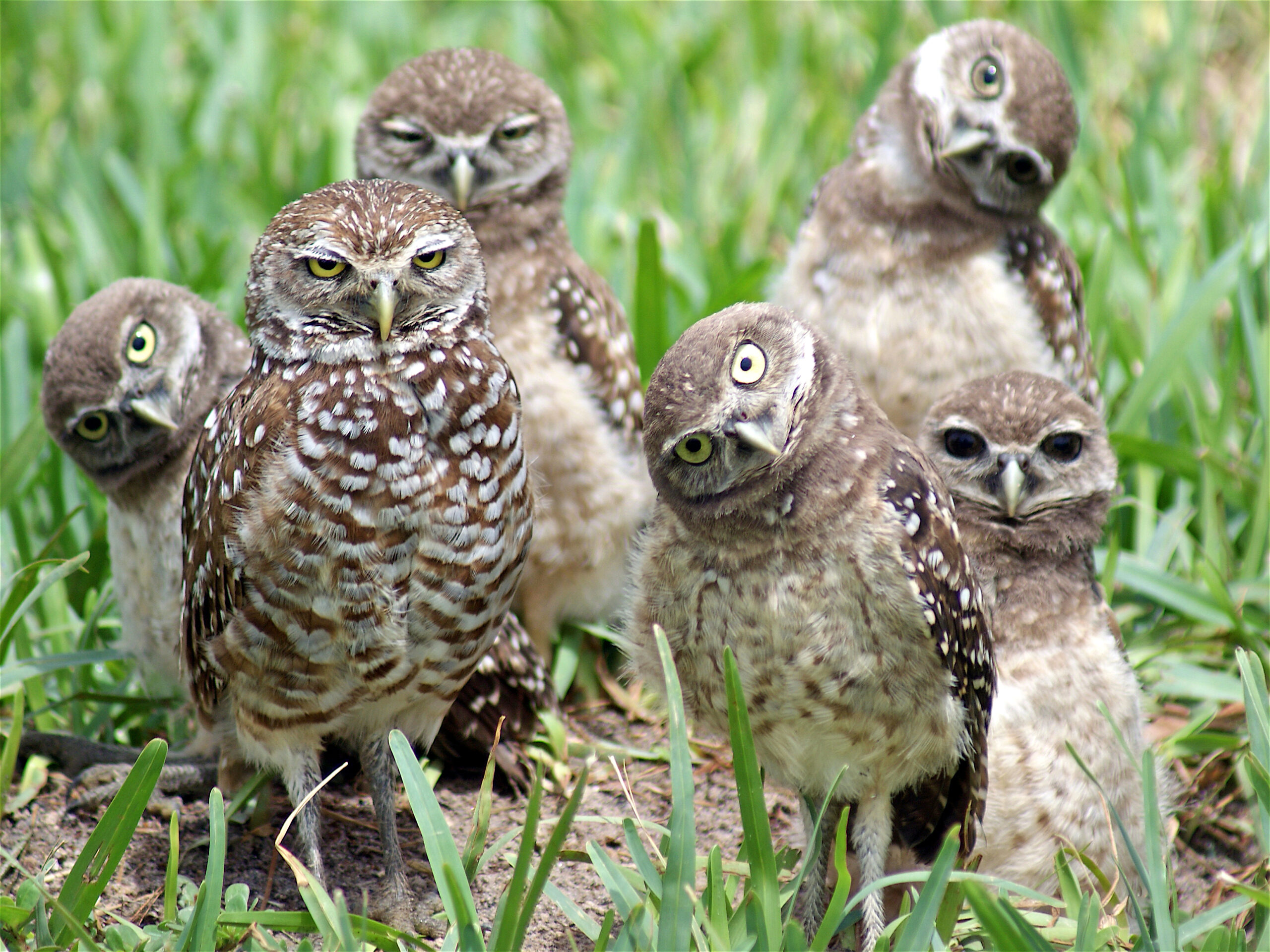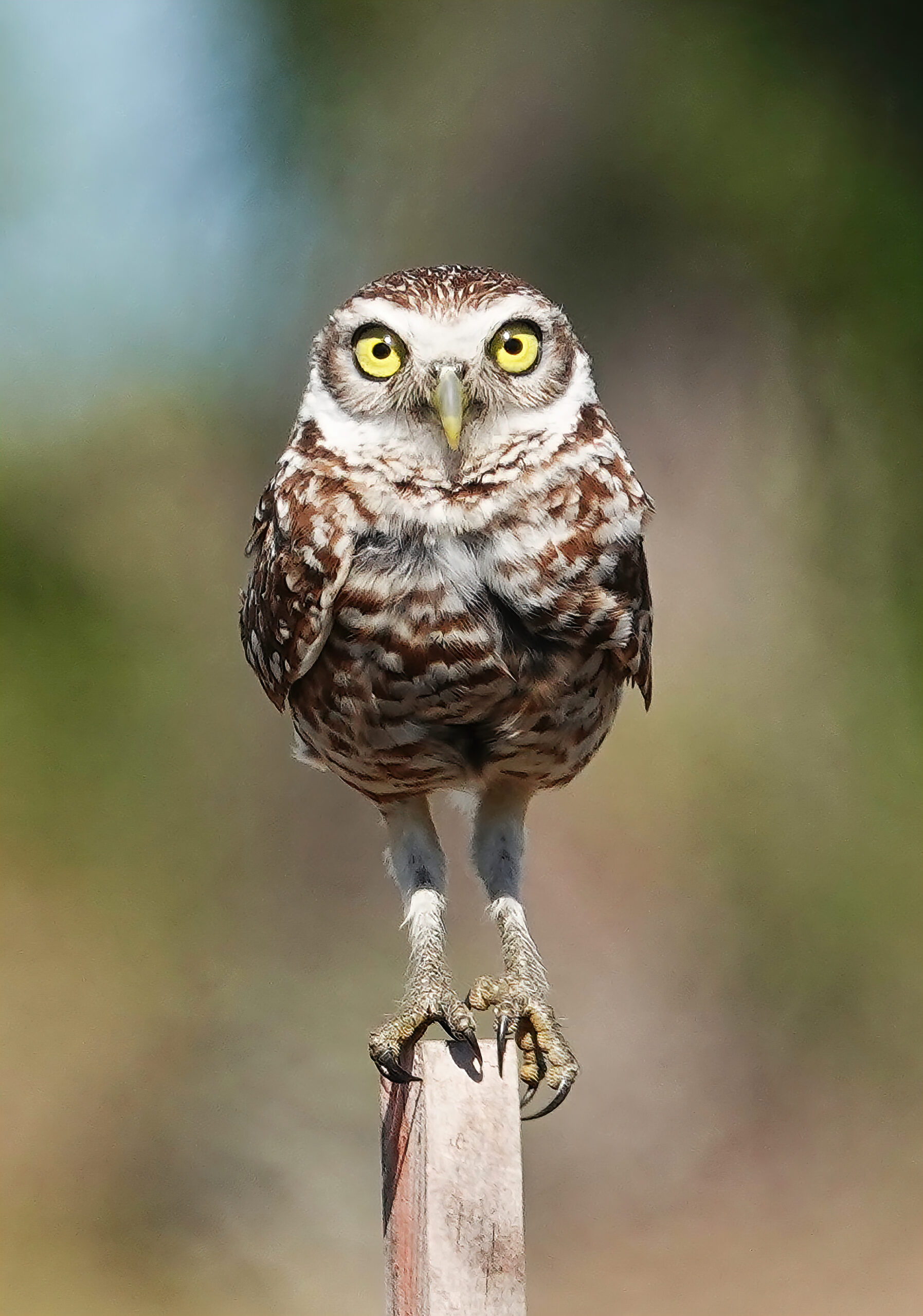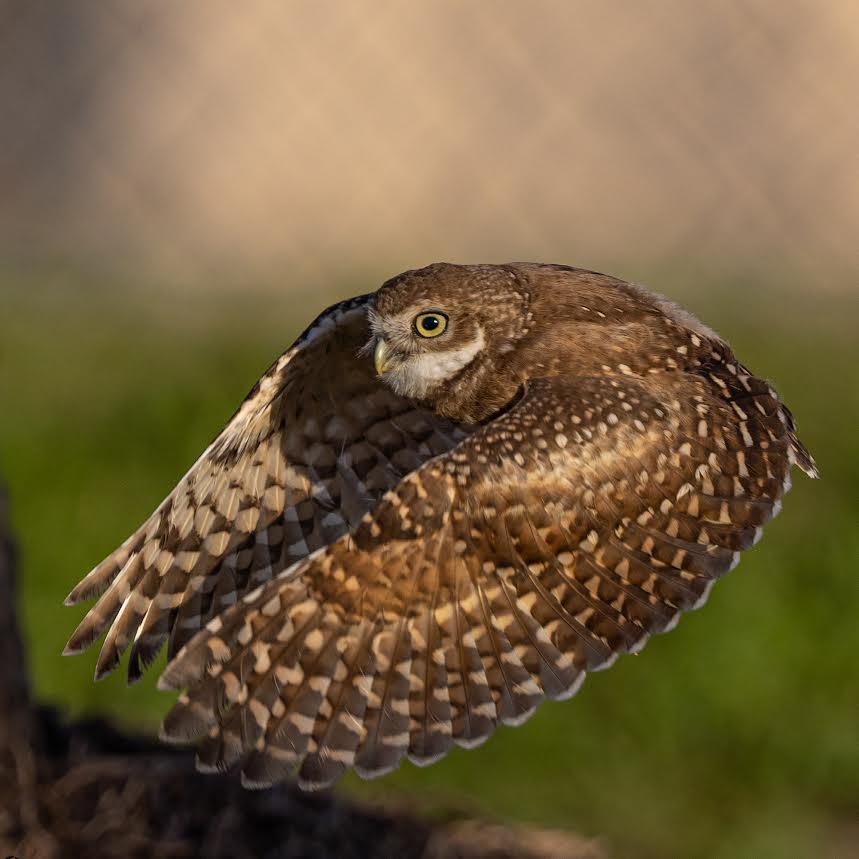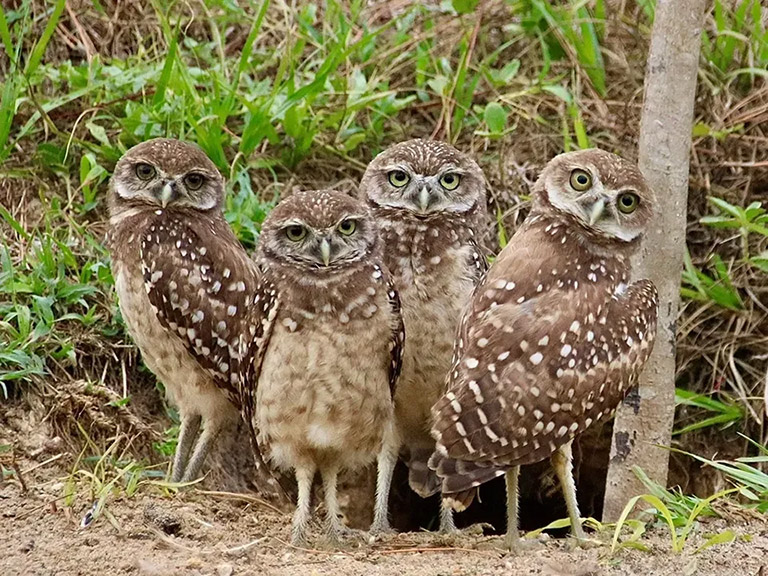Burrowing Owl Viewing Etiquette
Cape Coral is indeed fortunate to have the largest population of the Florida burrowing owl of any place in the world. Their burrows are unique in that they are easily accessible via City streets. Although it is wonderful to view these fascinating birds up close, we need to resist the temptation of loving them to death.
To help protect this species of special concern, state and federal laws prohibit the harassment of burrowing owls. This includes throwing rocks at them, trying to catch them, offering food items of any kind, or getting so close that their normal behavior is compromised in any way, especially during nesting season.
Nesting season officially runs from February 15th through July 10th.
What many people do not realize, especially since Cape Coral’s burrowing owls are so prevalent in established neighborhoods, is that your mere presence can adversely affect the well being of the owls. Although the owls may appear content, or tolerant of your presence, if you are too close they may be afraid to leave the nest area to hunt for food for their young. If the owls start bobbing their heads, you are already too close. Bobbing their heads is not a way of saying hello, they are getting nervous and want you to back away.
When viewing burrowing owls and taking pictures, you do not stay in the area around them for extended periods of time, and maintain a minimum distance of 33 feet. Please consider that other people also come from all over the world to view and photograph our burrowing owls. The cumulative effect of too many people, too close, for too long, could be devastating to the young.

Consideration of their needs and well being will help us to ensure that there are burrowing owls for many generations to come. Informational brochures are available at City Hall, the Cape Coral Historical Museum, local veterinary offices, and the Cape Coral Library.
Finally, please be considerate of residents’ property rights and right to privacy when viewing burrowing owls in Cape Coral. Do not park in residents’ yards or driveways or block traffic flow in City streets.
Rules of Engagement if You Visit Our Owls
- Download a map of suggested sites to search for owls on your own.
- Call Rotary Park Environment Center to sign up for a guided bus tour to see the Burrowing Owls and other wildlife of Cape Coral.
- Maintain a safe distance from the Burrowing Owls. Every known burrow in the city, located away from residential properties, has been marked with PVC pipes. Keep in mind that Burrowing Owl burrows can extend up to 10 feet, so the owl's living area may be outside the marked zone. It is not recommended to approach an owl closer than 20 feet or linger for extended periods. While owls may appear unperturbed by your presence, it disrupts their daily activities and may hinder their hunting for food, especially when chicks are present.
- Unlike other owl species, these owls are active during the day. They can often be observed sitting in front of their burrows or on nearby perches at any time. During nesting season, which lasts from February through July, the male stands guard over the burrow for hours, while the female tends to the eggs or young chicks. When the chicks are approximately 10 days old, they will start emerging from the burrow, and you'll see more of the female outside.
- For photographers, the best lighting conditions are during the first or last light of the day, as the harsh Florida sun is less favorable for great photos. For birders, mid-day, when the sun is at its hottest, is the least ideal time to observe the owls.
- Please do not feed the owls. Their diet consists of mice, roaches, small snakes, anoles, and frogs. Not crackers, peanuts, granola bars, or McDonald’s french fries!


Who to Contact
Learn who to contact for wildlife questions or to report possible harassment or violations.
Donate to CCFW
Make a tax deductible donation to support Cape Coral Friends of Wildlife and our mission to protect and educate.
General Meetings
View more information about our general meetings and upcoming guest speakers.






